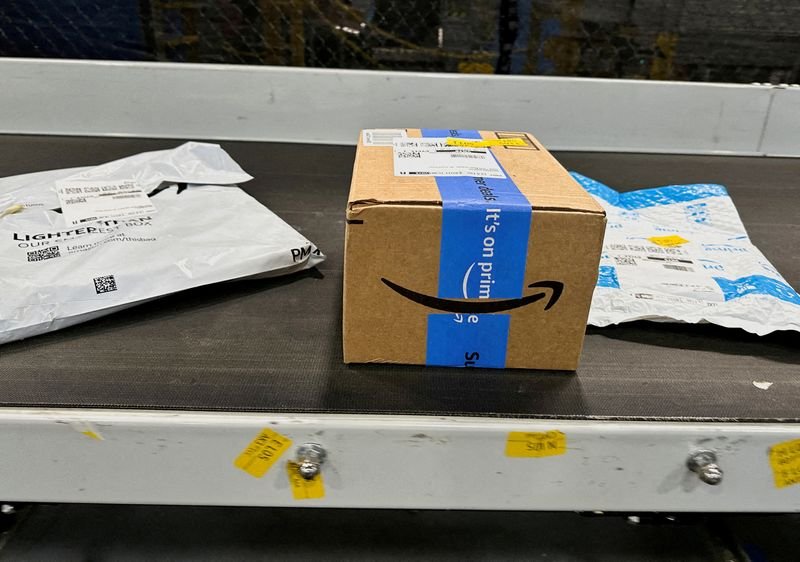Surge in U.S. Online Spending: An Insight into Consumer Behavior
In recent months, the landscape of online spending in the United States has experienced a significant shift. As various categories of goods see dramatic price reductions, consumer purchasing habits are evolving rapidly. According to a comprehensive analysis by Adobe, online sales in the U.S. surged by an impressive $24.1 billion, underscoring the impact of steep discounts on sales volumes.
The Rise of Online Sales
The increasing trend in online spending can be attributed to several factors, including changing consumer preferences and the widespread adoption of e-commerce. The digital marketplace has made shopping more convenient, prompting more individuals to opt for online purchases over traditional retail. As discounts become more prominent, shoppers are more inclined to take advantage of these price cuts, significantly impacting their buying behavior.
Key Drivers of Increased Online Spending
Discounts and Promotions
One of the most significant catalysts for this surge in online spending is the prevalence of discounts and promotional offers. Retailers have recognized the importance of competitive pricing in attracting customers. As shopping events like Black Friday, Cyber Monday, and various holiday sales approach, businesses are ramping up their discount strategies to entice consumers.
Shift in Consumer Behavior
The pandemic has significantly altered how individuals approach shopping. With more people accustomed to online shopping due to safety concerns, the preference for e-commerce has solidified. Many consumers now prioritize convenience and speed, choosing to shop online over commuting to physical stores.
The Role of Convenience
Online shopping provides consumers with unparalleled convenience. With just a few clicks, customers can browse through a vast array of products, check prices, and make purchases from the comfort of their homes. This convenience factor has led to a growing number of shoppers who see online platforms as their primary source for buying goods.
Category Breakdown of Online Spending
Fashion and Apparel
One of the standout categories contributing to this online shopping boom is fashion and apparel. With discounts on clothing and accessories, many consumers have turned to online retailers to refresh their wardrobes. E-commerce platforms have become essential for brands aiming to connect with consumers looking for the latest trends at reduced prices.
Electronics
Another category experiencing a noticeable uptick in online spending is electronics. Steep discounts on gadgets, computers, and home entertainment systems have prompted tech enthusiasts and casual shoppers alike to purchase their desired items online. The fusion of high demand for electronics and attractive pricing has made this category a driving force in overall online sales.
Home Goods and Furniture
Shoppers are also making substantial purchases in the home goods and furniture sector. As many individuals have shifted to remote work arrangements, there has been a growing interest in upgrading home spaces. Promotions and special offers have encouraged consumers to invest in home improvements and furnishings, leading to a spike in online transactions in this area.
Health and Beauty Products
The health and beauty sector is not lagging behind either. With a significant increase in consumers looking to care for themselves, online retailers have experienced heightened demand for beauty products and health supplies. Discounts on high-quality items have incentivized shoppers to buy online rather than in-person.
The Impact of Mobile Shopping
The rise of mobile shopping has also played an integral role in boosting online spending. Many consumers prefer using their smartphones and tablets to shop, leading to an increase in mobile transactions. Retailers are optimizing their websites and apps to enhance user experience, ensuring that mobile shopping is as seamless as possible.
Future Outlook for E-commerce
As we look ahead, the trajectory of online spending in the U.S. appears robust. With continuous advancements in technology and a growing emphasis on e-commerce, businesses are likely to harness new strategies to reach consumers effectively. The adaptation of artificial intelligence and augmented reality in the shopping experience may open up even more avenues for retailers to engage customers.
Anticipated Trends
Sustainability: As consumers become more eco-conscious, businesses that prioritize sustainable practices are likely to attract more online shoppers.
Personalization: Retailers embracing personalized shopping experiences through tailored recommendations are expected to see higher engagement and sales conversions.
- Social Commerce: The integration of social media and shopping will likely continue to rise, providing another platform for consumers to make purchases seamlessly.
Conclusion
The surge in U.S. online spending, fueled by significant discounts and changing consumer behaviors, marks a pivotal moment in the retail landscape. As shoppers continue to embrace the convenience of e-commerce, businesses must adapt and innovate to thrive in this dynamic environment. Understanding the nuances of consumer preferences will be critical for retailers aiming to capture this growing market segment effectively.
